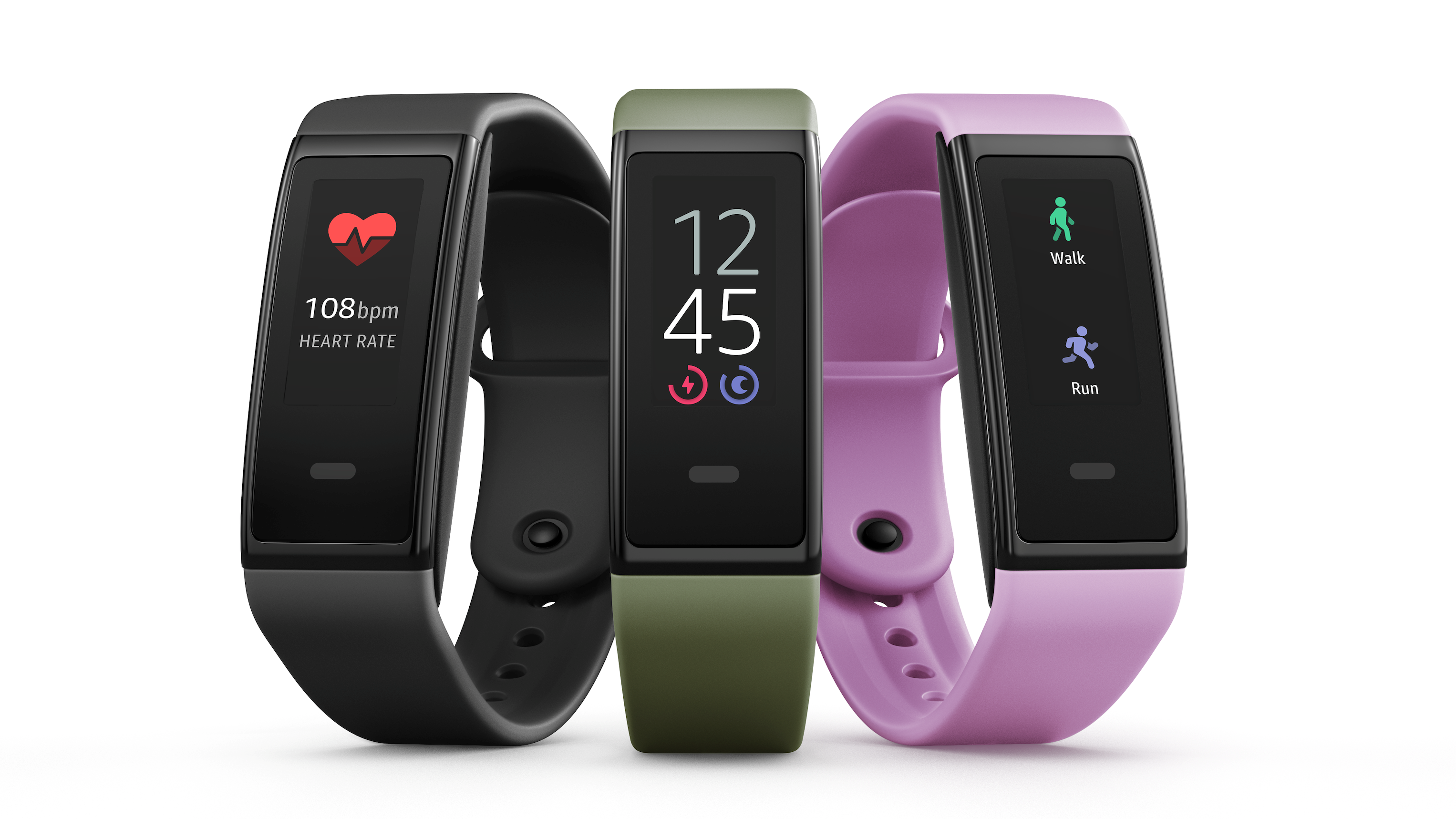On September 28, Amazon unveiled a host of new products including a home security robot, a Mickey Mouse themed smart speaker, and a second iteration of the Halo fitness tracker. Unlike the original Halo Band, which was a passive device that fed biometric data into a smartphone app, the new Halo View has a screen and looks much more like a conventional fitness wearable.
The Halo View offers all the features you’d expect from an entry-level fitness tracker, including heart rate and blood oxygen monitoring, workout tracking, sleep monitoring, smartphone notifications, and skin temperature tracking. What sets is apart from the competition is the price – at $79.99 (about £60 / AU$110) it’s one of the cheapest around. For that, you’ll be able to see your daily step count, activity sessions, heart rate, calories burned, time spent asleep and awake, and sleep temperature.

If you’re thinking that list sounds rather short, that’s because the Halo View’s other metrics – including activity score, activity intensity, sleep score, and sleep stages – are locked behind a paywall, and only accessible if you have an Amazon Halo subscription.
The price of entry isn’t particularly steep. You get 12 months free with a new Halo View, after which it’s a rolling payment of $3.99 (about £3 / AU$5.50) per month. That’s cheap for a service that also includes guided workouts, meditation and mindfulness sessions; recipes and nutrition advice; personalized exercise plans to help improve functional mobility; and body composition analysis. Indeed, it’s a fraction of the price of Apple Fitness Plus.
What’s interesting is that Amazon has chosen to draw Halo View owners in by locking a few metrics that you might normally expect to be free – and that might be a sign of things to come.
Ready or not...
Fitbit owners don’t have to pay monthly to check their sleep and activity scores, but they will get more out of their fitness tracker if they subscribe to Fitbit Premium. Like Amazon, Fitbit offers new owners a free trial, after which membership costs $9.99 / £7.99 / AU$15.49 per month.
Like Amazon Halo subscribers, Fitbit Premium members also get access to a catalog of instructor-led workouts, plus nutrition advice and meditation sessions. They also get more in-depth analysis of their health data. This includes personalized tips to help you develop healthier habits, a detailed breakdown of your nightly sleeping patterns, and (if you own a Fitbit Sense) an analysis of your daily stress score.
Those are all great to have, and really help you make the most of your device, but no key features have been hidden away for subscribers’ eyes only. Until now.

When Fitbit unveiled its latest fitness tracker, the Fitbit Charge 5, on August 24, it also announced a new feature – the Readiness Score. This is a figure calculated using your heart rate, recent activity history, and sleep score, and essentially tells you how much energy you have for the day ahead.
If you’re well rested and have a high score, the Fitbit app can suggest some intense workouts to get your heart pumping. If you’re a bit drained, it can offer some gentle yoga sessions so you can keep moving, but without burning yourself out.
It sounds impressive, but as Fitbit’s colorful promo video makes clear, the Readiness Score (which will be launching at some point in the coming months) is for Fitbit Premium subscribers only.
The Charge 5 can certainly be used without it (it’s absolutely packed with sensors, and captures more health metrics than any other Fitbit device to date), but there’s a definite message here: you need Premium to get the full experience.
It’s too early so far to say that there’s definitely a pattern here, but it’s certainly interesting that we’ve seen two big fitness tracker launches within the last two months, both of which are designed around the assumption that you’ll not only pay the one-off cost of the fitness tracker itself, but keep a rolling subscription going as well, in order to access more of your health data as part of a bundle of fitness tools and resources.
It’s not hard to imagine how, a year or two from now, we might see the start of ‘fitness tracking as a service’ where the wristband is free up front, but you’re locked into a contract paying a set fee each month to access your own biometric data. The concept of paying a fee to see your own heart rate seems strange, but it might not be too far off.
- We've tested and ranked the best running watches
from TechRadar - All the latest technology news https://ift.tt/3l6Vv7D




0 Comments